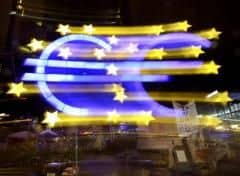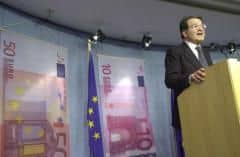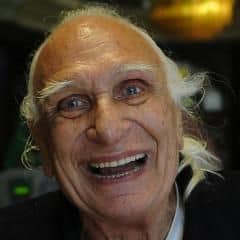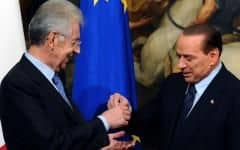13 agosto 2012 – ore 10:50
Addio alla carta?
I grandi giornali internazionali cominciano a vendere più online che in edicola. Inchiesta su quella che pare una strada inevitabile

 La diffusione media giornaliera dei quotidiani a pagamento è scesa sotto i 4,5 milioni di copie giornaliere; in soli cinque anni, tra il 2006 e il 2011, si è perso più di un milione di copie giornaliere di diffusione, e il fenomeno della free press, che ha rappresentato per anni un’interessante opportunità di diversificazione permettendo di raggiungere nuovi lettori, appare in pesante ripiegamento, con chiusure di testate, accorpamenti di edizioni, tagli alle tirature e alle foliazioni. La pubblicità nel 2011 è calata del 5,5 per cento per i quotidiani a pagamento, e addirittura del 22,4 per i gratuiti, a fronte di un mercato complessivo che ha perso il 3,8 per cento. La quota di mercato dei quotidiani è passata dal 16,2 al 15,6 per cento”. Così si leggeva appena due mesi fa nel Rapporto della Associazione stampatori italiani di giornali sull’industria dei quotidiani in Italia. I dati si riferiscono all’anno scorso, ma nel primo semestre di quest’anno le cose, se possibile, vanno peggio: per dirne una, rispetto al 2011 la pubblicità su carta stampata registra un -13,7 per cento.
La diffusione media giornaliera dei quotidiani a pagamento è scesa sotto i 4,5 milioni di copie giornaliere; in soli cinque anni, tra il 2006 e il 2011, si è perso più di un milione di copie giornaliere di diffusione, e il fenomeno della free press, che ha rappresentato per anni un’interessante opportunità di diversificazione permettendo di raggiungere nuovi lettori, appare in pesante ripiegamento, con chiusure di testate, accorpamenti di edizioni, tagli alle tirature e alle foliazioni. La pubblicità nel 2011 è calata del 5,5 per cento per i quotidiani a pagamento, e addirittura del 22,4 per i gratuiti, a fronte di un mercato complessivo che ha perso il 3,8 per cento. La quota di mercato dei quotidiani è passata dal 16,2 al 15,6 per cento”. Così si leggeva appena due mesi fa nel Rapporto della Associazione stampatori italiani di giornali sull’industria dei quotidiani in Italia. I dati si riferiscono all’anno scorso, ma nel primo semestre di quest’anno le cose, se possibile, vanno peggio: per dirne una, rispetto al 2011 la pubblicità su carta stampata registra un -13,7 per cento.
Da qualche mese in quasi tutti i quotidiani italiani si assiste a tagli, prepensionamenti, riassetti del personale e contratti di solidarietà per evitare licenziamenti. Sembra di rivedere quanto successo negli Stati Uniti cinque anni fa: come descritto in un report della Newspaper association of America, negli States la pubblicità sui giornali è cominciata a calare nel 2007, e da allora non si è più ripresa; nello stesso periodo, all’incirca, il numero di lettori ha smesso di crescere, per cominciare a calare inesorabilmente (negli ultimi 40 anni, a fronte di un incremento della popolazione del 50 per cento, si è assistito al calo contestuale della diffusione dei giornali di quasi il 30 per cento); lettori di giornali cartacei sempre più vecchi, se è vero che solo il 22 per cento dei giovani, la metà rispetto agli adulti, sfoglia le pagine di un quotidiano. Questi dati hanno colpito l’industria americana delle news, che nel primo decennio del 2000 ha visto diminuire il numero di giornalisti in attività di da 56.000 a 40.000, ridurre le spese per la produzione di contenuti di oltre un miliardo e mezzo di dollari negli ultimi tre anni, e diminuire pesantemente il numero di articoli scritti (dal 2006 al 2008 la differenza è di 828.000 “pezzi” pubblicati).
Dove sono andati tutti questi lettori? La risposta è scontata, ma con conseguenze complicate: sul Web. Non si tratta però di una semplice transumanza dall’edicola all’on line, e i numeri che parlano di milioni di lettori sui siti dei quotidiani ingannano. Le pagine di news lette sul web, per esempio, sono appena il 3,5 per cento delle pagine lette sulla carta. Che fare?
Ci sono tre notizie importanti da cui far partire questa riflessione sul futuro dell’informazione: dal secondo trimestre di quest’anno il New York Times riceve più introiti dai suoi lettori (molti digitali) che dalla pubblicità; gli abbonati digitali al Financial Times (sito, tablet, smartphone) hanno superato i lettori del cartaceo; l’editore di Newsweek, Barry Diller, ha appena annunciato che quasi sicuramente il noto settimanale americano sospenderà le pubblicazioni cartacee e sarà disponibile soltanto on line.
L’imbuto è dunque sempre più stretto? E’ vero, come dicono diversi analisti, che il futuro sarà on line o non sarà? Il primo dato da tenere presente è questo: secondo Audiweb, società che monitora l’informazione on line in Italia, l’audience Web a giugno ha registrato una crescita del 7,8 per cento in un anno, con 28,3 milioni di utenti on line. 14 milioni gli italiani collegati nel giorno medio, l’8 per cento in più rispetto a giugno 2011. Sembrerebbe facile capire su cosa puntare.
Pier Luca Santoro è un consulente di marketing e comunicazione, attento osservatore dell’evoluzione dei media, che commenta quotidianamente sul blog “Il giornalaio” e sul sito dell’European Journalism Observatory. Ci spiega che non è così facile come sembra: “Il tentativo di recuperare le entrate perse dalla carta attraverso l’on line è il problema, l’aspetto cruciale in attesa di una soluzione sostenibile”. Santoro usa il “dilemma del prigioniero” per illustrare il paradosso di una soluzione che sembra a portata di mano ma non si riesce mai ad afferrare. “La formula vincente non è stata ancora trovata. Da poco ho fatto uno studio su alcuni quotidiani generalisti ed economici in Europa: quello che emerge è che sembra che la specializzazione paghi, il generalismo no”. Eppure piattaforme come quelle di Corriere.it e Repubblica.it sembrano cavarsela bene. “I quotidiani generalisti in generale non vanno bene – sostiene Santoro – perdono molto su carta e sul digitale fatturano, ma non abbastanza. In nessun caso, tranne il New York Times, riescono a farsi pagare per le notizie”. Santoro cita il caso del Guardian, quotidiano inglese considerato da molti il miglior generalista del mondo, che negli ultimi anni ha puntato decisamente sul digitale continuando però a riportare perdite di decine di milioni di sterline. “Il Guardian ha 62 milioni di visitatori unici al giorno sul proprio sito, eppure non riesce a superare i 30.000 abbonati su iPad”, dice Santoro.
Forse la gente non è disposta a pagare per l’informazione generalista, ma non è detto che per l’informazione generalista questo sia un problema. Repubblica.it è stato il primo sito di quotidiano nazionale aperto in Italia, nel 1997, e da allora è stato costantemente il più visitato in quel settore. Con Pier Paolo Cervi alla guida della divisione digitale, negli ultimi tre anni è stato probabilmente il sito di news che più ha provato a sperimentare, in qualche modo dettando la linea agli altri, non senza qualche caduta di stile (la colonna di destra del sito, con donne semi nude, animali curiosi e gossip è roba che su un giornale americano non vedrete mai). A oggi il comparto digitale raccoglie il 25 per cento della pubblicità dell’intero gruppo Repubblica-L’Espresso, e il trend è in crescita (+12 per cento nel primo semestre di quest’anno). Avere un editore che ci crede e investe fa ovviamente la differenza: a Repubblica si sta puntando sempre di più sulla produzione di video, per andare a intercettare i lettori del futuro prossimo, quando l’Internet tv sarà nei salotti di tutte le case degli italiani e navigare su Web sarà come cambiare canale con il telecomando.
Solo da qualche tempo in Italia si è cominciato a produrre articoli ad hoc per i siti,abbandonando in parte il vecchio modello per cui il sito è un semplice rilancio on line dei contenuti del cartaceo. Resiste ancora però l’idea che la carta è una cosa seria e il sito un po’ meno: se c’è uno scoop, o un articolo forte, lo si tiene per l’edicola, e in molte redazioni è comune la fatica di far scrivere le “grandi firme” per l’on line, da alcuni ancora considerato una deminutio del proprio valore.
Pietro Senaldi è vicedirettore di Libero, e si occupa anche del sito del quotidiano diretto da Maurizio Belpietro, rinnovato da poco e con buoni dati di raccolta pubblicitaria e numero di visitatori unici. Concorda sul fatto che uno dei punti di resistenza nell’integrazione tra carta e Web è la “questione generazionale”: un giornalista cresciuto e affermatosi con i mezzi tradizionali difficilmente lascia un porto sicuro per uno sconosciuto, ma il sistema è destinato comunque a rinnovarsi. Senaldi fa un esempio noto a chiunque lavori in un giornale: “Uffici stampa, politici e personaggi famosi vogliono apparire su carta, pensando che questa abbia più autorevolezza di un sito internet. Il giorno in cui comincerà a cambiare questa mentalità, e arriveranno richieste di apparire sul Web, investitori e pubblicitari si sposteranno decisamente su questo terreno”. Poi c’è la selezione naturale. “Il giornalista di oggi – prosegue Senaldi – deve essere multimediale, chi non ce la fa sarà fatto fuori dal sistema”. La differenza però, molto più che sulla carta, dove una buona penna di un piccolo giornale può competere con la buona penna di un grande giornale, la faranno sempre di più i soldi investiti dall’editore: per quanto possa andare bene la raccolta pubblicitaria, a oggi nessun giornale riesce a sostenersi grazie a questa, anche perché è vero che cresce (circa +10 per cento quella on line contro l’oltre -10 cento di quella cartacea) ma con cifre ancora molto basse.
O si è una corazzata, con forti investimenti a disposizione, o si punta sulla specializzazione a pagamento (è il caso del Financial Times, che non ha nulla free), oppure si prova a fare qualcosa di nuovo. E’ il caso di Banzai, società italiana attiva nel mercato Internet e focalizzata sui settori eCommerce, Media, e Web Design. Nata nel 2008, oggi è al terzo posto tra i player italiani del Web – si legge sul loro sito – come unico operatore indipendente accanto ai maggiori editori e alle grandi aziende di telecomunicazioni. Grazie a Banzai sono nati, o rinati, siti famosi come Liquida, il Post di Luca Sofri, Giornalettismo, Studenti.it, Zingarate.com. Andrea Santagata, Ceo di Banzai, ci dice che “probabilmente in Italia sta succedendo quello che è successo qualche anno fa in America: prima una contrazione nelle vendite, poi un crollo significativo”. Negli ultimi cinque anni le vendite di quotidiani in edicola effettivamente sono diminuite del 20 per cento. “Non è ancora chiaro se la crisi del sistema sia congiunturale, dovuta alla crisi. L’impressione comunque è che il calo durerà almeno tutto quest’anno e parte del prossimo. Ma è probabile che la crisi del 2011/2012 sia l’innesco di un crollo simile a quelo registrato negli Stati Uniti nel 2007”. E’ però vero che la pubblicità on line cresce in fretta. “Sì – dice Santagata – si calcola che il giro d’affari sia di 1,3 miliardi di euro in Italia, ma di fatto a chi fa news on line restino da spartirsi appena 250-300 milioni”.
Ancora troppo poco. Una soluzione, sperimentata con relativo successo in Inghilterra e Stati Uniti, potrebbe essere quella dei paywall, sistemi a pagamento per leggere tutti o parte degli articoli. Santagata è scettico: “In America sono avanti, da noi a questo punto vedo difficile trasformare l’informazione on line a pagamento. Credo piuttosto che il mercato si manterrà quello che è oggi, con qualche innovazione, un po’ di pubblicità on line e più applicazioni su tablet”. Nulla di rivoluzionario, però. “Pensare di puntare sugli abbonamenti on line non è vincente, quello a pagamento mi sembra un mercato destinato a una élite. Magari numerosa, ma non in grado di spostare grandi cifre”. Meglio tutto gratis, come fanno a Banzai? “Il vantaggio di essere nuovi editori – spiega Santagata – è la possibilità di partire con una struttura leggera, libera da costi inutili ereditati dal passato. Lo svantaggio è la poca competenza e l’assenza di un brand conosciuto, ma questo ti permette di generare qualcosa di nuovo”. Santagata parla di “un tipo di informazione che è un mix di professionalità e contenuti generati dagli utenti”.
Il modello ideale è l’Huffington Post, nato come aggregatore di centinaia di blog che coprivano tutto lo scibile umano o quasi, e che generavano molto traffico grazie alla somma dei micro argomenti trattati dai blogger. Il rischio però è quello di svilire la professione di giornalista, affidandosi a meno costosi volontari che scrivono gratis per un po’ di visibilità. “No – spiega Santagata – i contenuti generati dagli utenti sono il punto di partenza, un editore e dei giornalisti che guidano quei contenuti sono comunque necessari”. Senza dimenticare l’apporto della tecnologia, in Italia poco considerato: “Quando si aggregano grandi volumi serve un algoritmo che gestisca in automatico cosa funziona di più e cosa di meno. All’Huffington Post utilizzano sistemi automatici per socializzare l’audience e addirittura per sceglieri i titoli degli articoli in base a come potrebbero funzionare su motori di ricerca e social network”. Banzai, che oggi dà lavoro a 130 persone e nel 2011 ha fatturato 110 milioni di euro, ha cominciato con un forte investimento sulla tecnologia, e ora va avanti con costi più bassi proprio grazie a quell’investimento iniziale. Senza contare la pubblicità, venduta sui siti del network Banzai direttamente da una concessionaria interna e che, assicura Santagata, nel primo semestre di quest’anno è cresciuta del 30 per cento.
Il modello tutto gratis è dunque un modello possibile (a Repubblica piace, e continueranno ad adottarlo affiancandogli prodotti premium a pagamento, soprattutto su tablet e smartphone), ma come detto non è l’unico. Il gruppo Sole 24 Ore, ad esempio, è stato colpito anch’esso dal calo della pubblicità, ma è riuscito a contenere i danni soprattutto grazie all’aumento delle vendite (+2,1 milioni di euro), a loro volta dovute in particolare agli abbonamenti a pdf e iPad (+93 per cento rispetto al dicembre 2011, con oltre 35.000 abbonati di cui 30.000 annuali). Cifre però ancora riconducibili alla “élite” di cui parlava Santagata. Ancora Pier Luca Santoro: “I giornali devono trovare nuovi modelli di remunerazione in termini di proposta e nuovi modi di generare ricavi non bastano vendite o abbonamenti, la storia del New York Times è lì a dimostrarcelo”. Così come l’esperienza del Daily, quotidiano solo per tablet voluto da Rupert Murdoch, in perdita costante e a rischio chiusura. Come farsi remunerare? “Dipende dalla testata: l’Economist ha creato una sezione del sito di business intelligence a pagamento che funziona, il Financial Times è imprescindibile per un certo pubblico che oltretutto è più avvezzo alle nuove tecnologie. Bisognerebbe individuare grazie a social network, ricerche ad hoc e sperimentazioni le soluzioni migliori da offrire al proprio pubblico”. Santoro fa un esempio: “Io leggo tutti i giorni articoli del New York Times on line, ma ci arrivo da motori di ricerca o social network, quindi non li pago. Non passo dalla home page del Times da mesi, credo. Se adesso mi chiedessero di pagarli per leggere ancora direi di no. Ma se mi offrissero la possibilità di pagare un abbonamento mensile per ricevere via newsletter tutti gli articoli dei giornalisti o degli argomenti che mi interessano direi di sì”. In Croazia, Slovacchia e Polonia hanno creato un paywall nazionale, che permette, una volta abbonati, di leggere tutti i quotidiani del paese. “Utopia, in Italia”, dice Santoro.
Ma è già il momento di fare il funerale alla carta? “No – assicura Santoro – Innanzitutto perché siamo un paese ancora poco digitalizzato: più del 50 per cento della popolazione non ha accesso a Internet, c’è dunque un aspetto socio-demografico che ci dice che la carta verrà comprata, sempre meno, per moltissimo tempo ancora”. C’è poi un aspetto che chi è passato alla lettura dei quotidiani su tablet fatica a superare: “Su carta si notano molte più cose, su iPad o Web si perdono particolari importanti, anche se si sfoglia il pdf”. Una lenta agonia? “Se vogliamo che la carta muoia in fretta basta andare avanti così. Basterebbero alcune accortezze per ottimizzare costi e ricavi della distribuzione: innanzitutto con l’informatizzazione delle edicole. A oggi sono circa 5 mila su 30 mila ma potenzialmente consentirebbe all’editore di conoscere in tempo reale il venduto per ciascun punto vendita garantendo ottimizzazione del costo dei resi, agevolerebbe la possibilità di sondaggi, di ricerche su argomenti ad hoc e favorirebbe l’implementazione di molti altri servizi”. La stampa è in crisi, la voglia delle persone di informarsi no. Probabilmente sopravviverà chi saprà adattarsi ai nuovi contenitori senza dimenticare chi è e da dove viene.
© – FOGLIO QUOTIDIANO Piero Vietti
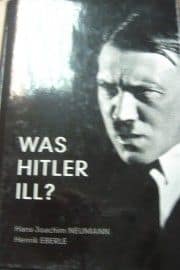 A review of the book “Was Hitler ill? A final diagnosis” by Hans-Joachim Neumann and Herik Eberle. Polity Press, 2013.
A review of the book “Was Hitler ill? A final diagnosis” by Hans-Joachim Neumann and Herik Eberle. Polity Press, 2013.


 Machiavelli wrote it in 1513, but then it was published only in 1532, posthumously. Machiavelli died in 1527.
Machiavelli wrote it in 1513, but then it was published only in 1532, posthumously. Machiavelli died in 1527.
 La diffusione media giornaliera dei quotidiani a pagamento è scesa sotto i 4,5 milioni di copie giornaliere; in soli cinque anni, tra il 2006 e il 2011, si è perso più di un milione di copie giornaliere di diffusione, e il fenomeno della free press, che ha rappresentato per anni un’interessante opportunità di diversificazione permettendo di raggiungere nuovi lettori, appare in pesante ripiegamento, con chiusure di testate, accorpamenti di edizioni, tagli alle tirature e alle foliazioni. La pubblicità nel 2011 è calata del 5,5 per cento per i quotidiani a pagamento, e addirittura del 22,4 per i gratuiti, a fronte di un mercato complessivo che ha perso il 3,8 per cento. La quota di mercato dei quotidiani è passata dal 16,2 al 15,6 per cento”. Così si leggeva appena due mesi fa nel Rapporto della Associazione stampatori italiani di giornali sull’industria dei quotidiani in Italia. I dati si riferiscono all’anno scorso, ma nel primo semestre di quest’anno le cose, se possibile, vanno peggio: per dirne una, rispetto al 2011 la pubblicità su carta stampata registra un -13,7 per cento.
La diffusione media giornaliera dei quotidiani a pagamento è scesa sotto i 4,5 milioni di copie giornaliere; in soli cinque anni, tra il 2006 e il 2011, si è perso più di un milione di copie giornaliere di diffusione, e il fenomeno della free press, che ha rappresentato per anni un’interessante opportunità di diversificazione permettendo di raggiungere nuovi lettori, appare in pesante ripiegamento, con chiusure di testate, accorpamenti di edizioni, tagli alle tirature e alle foliazioni. La pubblicità nel 2011 è calata del 5,5 per cento per i quotidiani a pagamento, e addirittura del 22,4 per i gratuiti, a fronte di un mercato complessivo che ha perso il 3,8 per cento. La quota di mercato dei quotidiani è passata dal 16,2 al 15,6 per cento”. Così si leggeva appena due mesi fa nel Rapporto della Associazione stampatori italiani di giornali sull’industria dei quotidiani in Italia. I dati si riferiscono all’anno scorso, ma nel primo semestre di quest’anno le cose, se possibile, vanno peggio: per dirne una, rispetto al 2011 la pubblicità su carta stampata registra un -13,7 per cento.

